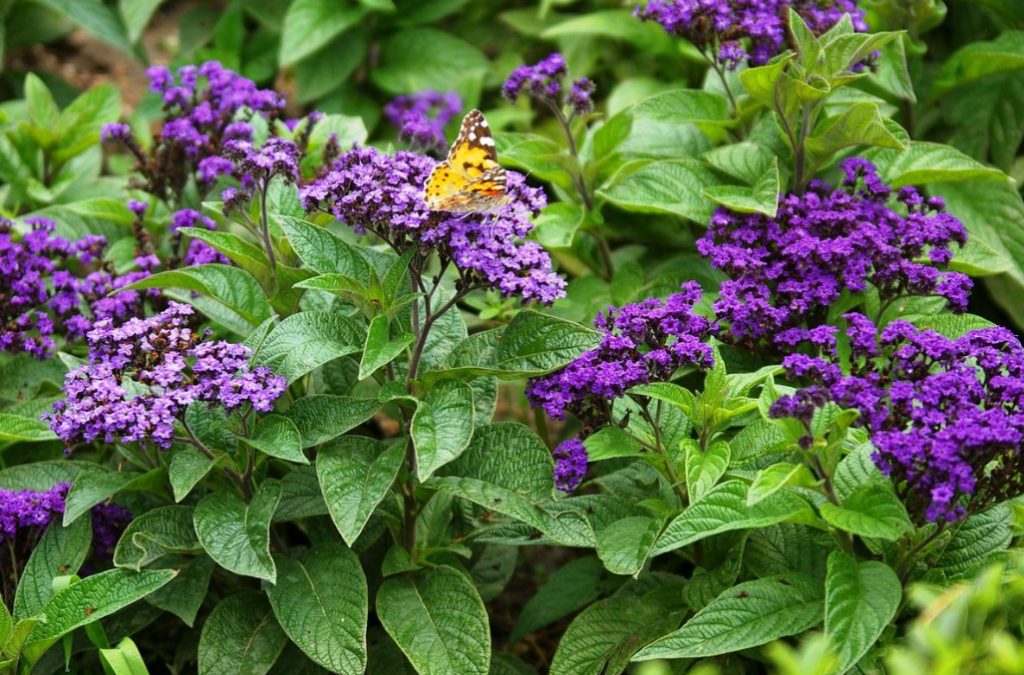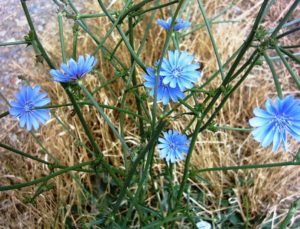Let’s talk about ancient plants, meaning those that possessed the minds and feelings of flower growers in the XIX-XX centuries, and then for various reasons, gave way to new species, going into the shadows.
Today, my story will be devoted to flower species, the beauty and aroma of which excited everyone without exception: professional gardeners and Amateurs, artists and poets.

Simple fragrant plants reigned in the flower beds of the past and the centuries before. They were cherished: they tried to keep their favorite smells in dried flowers and leaves, they searched for fragrance notes in perfumes, and dreamed about them in dreams and in reality. But nothing in this world is forever… gradually they were replaced from the gardens by species with more beautiful flowers and luxurious exotic flavors: Gardenia, Hyacinthus and others. But it seems that the lovely old scented plants are ready for a triumphant return: in our flower beds, they are becoming more and more every day!
Heliotropium
Heliotropium arborescens, or Heliotropium peruvianum was a real favorite of the silver age, which came at the end of the XIX – early XX centuries. Fans were captivated not only by the vanilla evening-night aroma, but also by the deep purple color-the color of the art Nouveau style that prevailed at that time.

It was grown mainly as a potted plant from the Boraginaceae family, sometimes formed as a perennial stem tree.
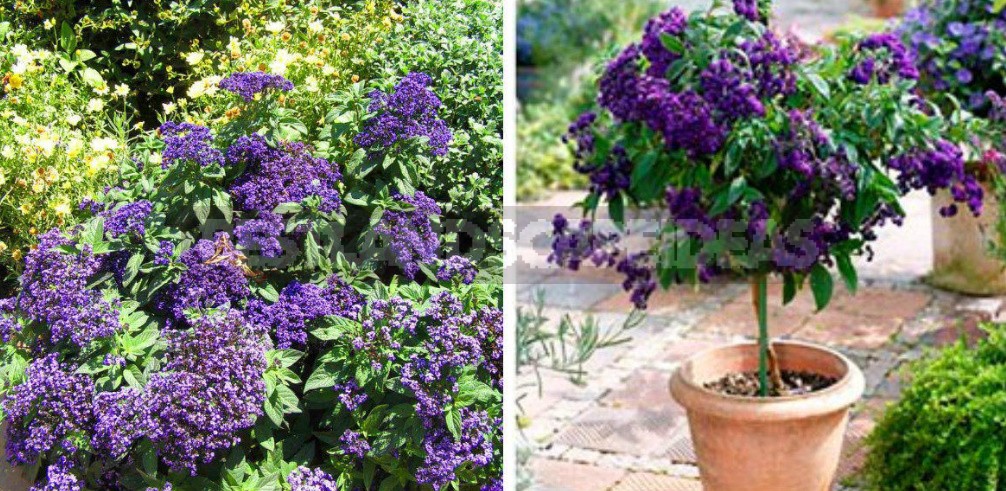
For many years, Heliotropium did not go out into the garden. It was propagated mainly by cuttings. Over time, thanks to selection, varieties were obtained that could be grown through seedlings as annuals, blooming in the year of sowing.

So, this is a perennial with partially woody shoots. It is grown as a seasonal flowering plant, and modern varieties as annuals. In natural conditions (it is native to Peru), Heliotropium arborescens can reach a height of 1.2 m and a width of 30-45 cm, but it usually grows to 30-50 cm in a season.. The leaves are dark green, wrinkled, slightly pubescent, up to 8 cm long.. Flowers with honey-vanilla aroma, small, dark purple, lavender-blue, collected in dense corymbose inflorescences, bloom from June to autumn frosts.
Decorative varieties:
- ‘Chatsworth’ (bright purple flowers, strong aroma)
- ‘Iowa’ (compact, dark purple flowers)
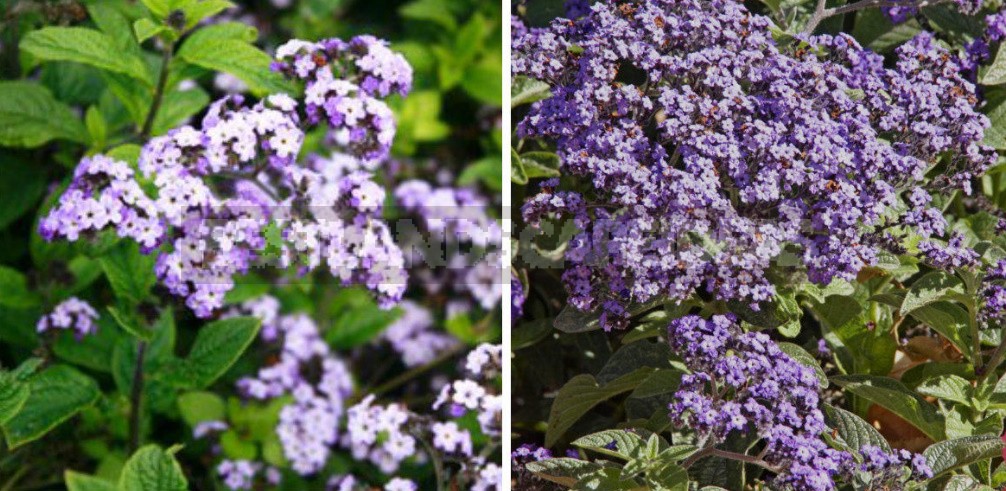
- ‘Lord Roberts’ (compact; the flowers are pale violet-blue)
- ‘Marine’ (compact, up to 45 cm high, inflorescences up to 15 cm in diameter, dark purple-blue flowers)

- ‘Mini Marine’ (dwarf, up to 40 cm tall; dark purple-blue flowers)
- ‘Princess Marina’ (compact, up to 30 cm high; dark purple-blue flowers, delicate aroma)
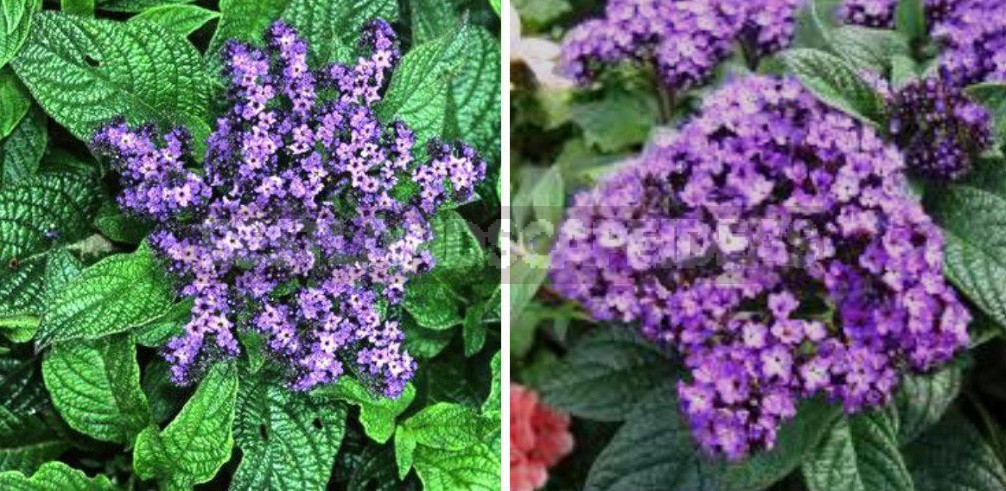
- ‘Alba'(white flowers with vanilla flavor)

- ‘Baby Blue’ (compact; flowers are very fragrant, lilac-purple)

- ‘Black Beauty’ (bright purple flowers with vanilla flavor)

- ‘Fragrance Delight’ (flowers from purple to lavender, with vanilla flavor)
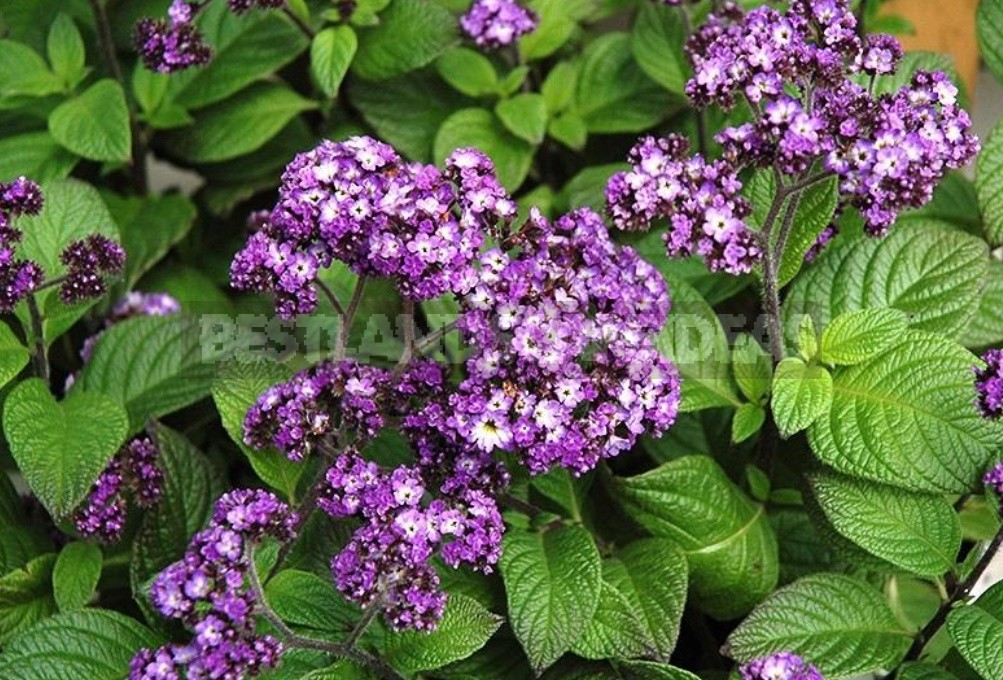
Requirements for growing conditions
Light-loving, but grows well and blooms in partial shade. Likes fertile loose soil, during growth responsive to fertilizing full mineral fertilizer every 2 weeks.
Propagated through seedlings (sowing in February-March, landing in the open ground in early June). Favorite varieties can be rooted with green cuttings.
Accommodation in the country
The ideal place for planting fragrant varieties-along the paths, near the gazebo, next to your favorite garden benches, where you can relax in the evening. In mixed flower beds, it is equally harmonious with green (both with Petroselinum crispum, and with Amaranthus, Zinnia, and Nicotiana persica) plants. By the way, the duet of purple and green was once recognized as the most spectacular in garden design.

The mysterious (even mystical) Heliotropium is also beautiful in duet with plants with white flowers: Petunia, Tagetes, and others.
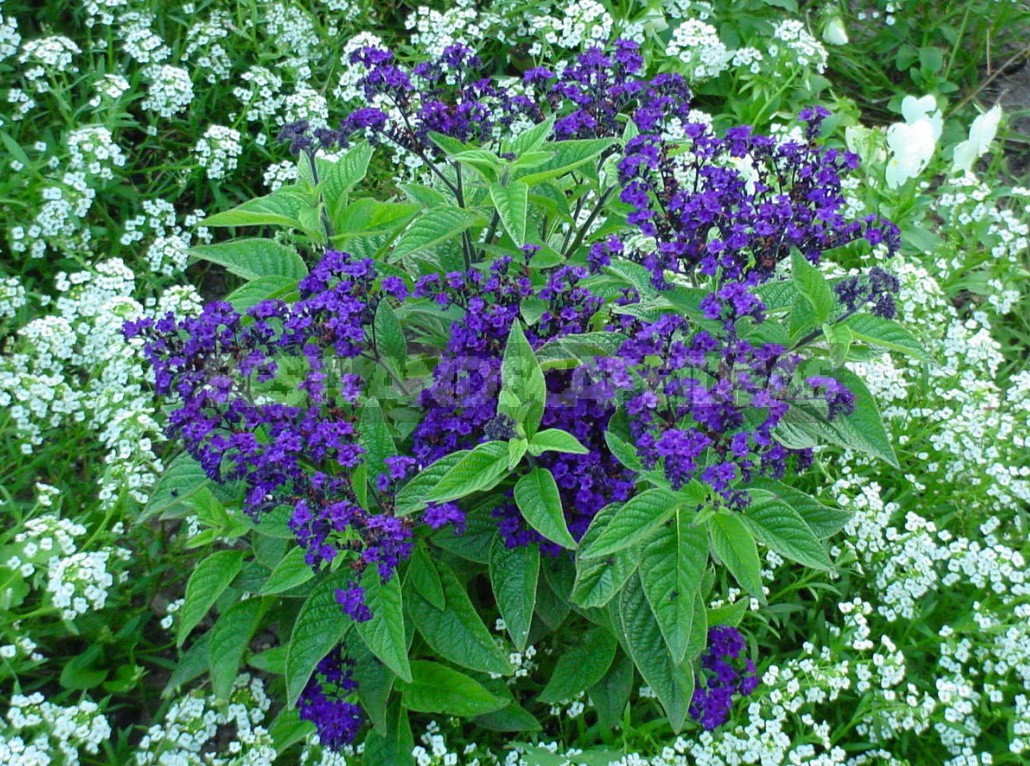
Heliotropium is also good in a limited amount of soil substrate: in large or low (but wide) vases.
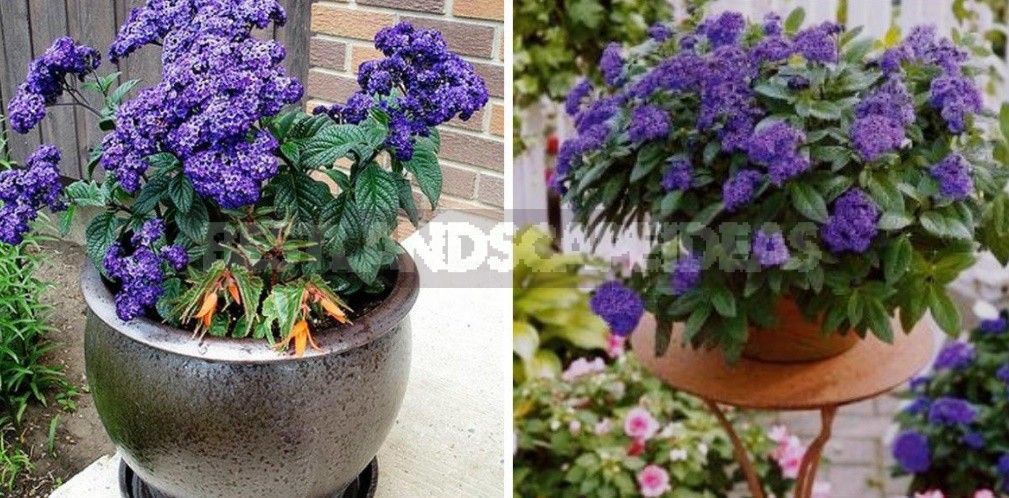
Erysimum cheiri
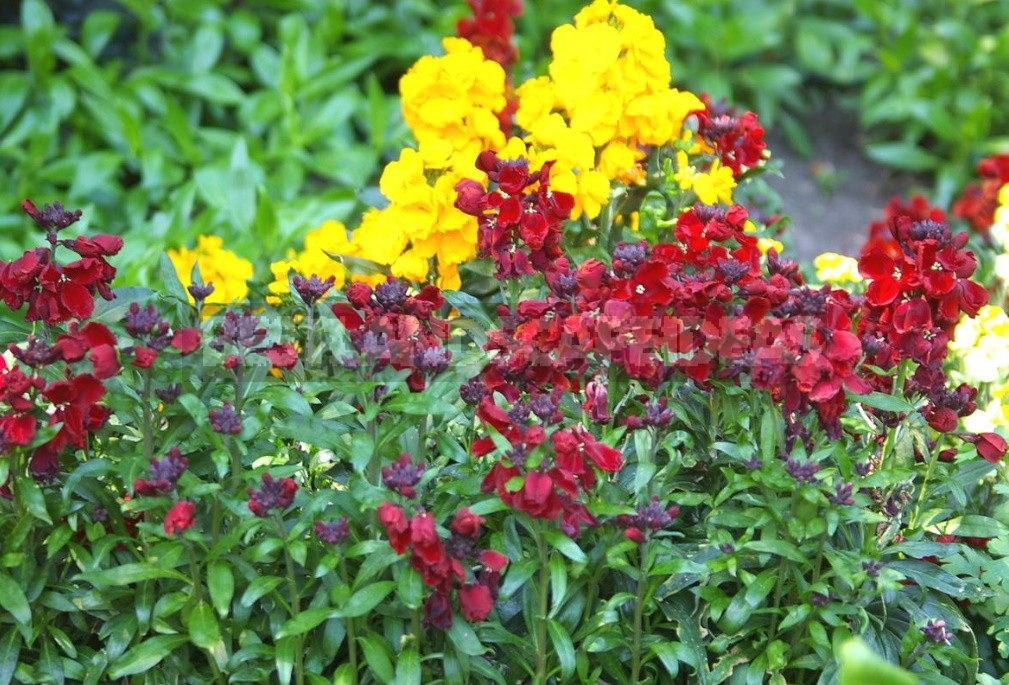
In one Botanical garden there was so much of it that it seemed as if the may air smelled of violets. Since then, I have never seen it in such large numbers anywhere else.
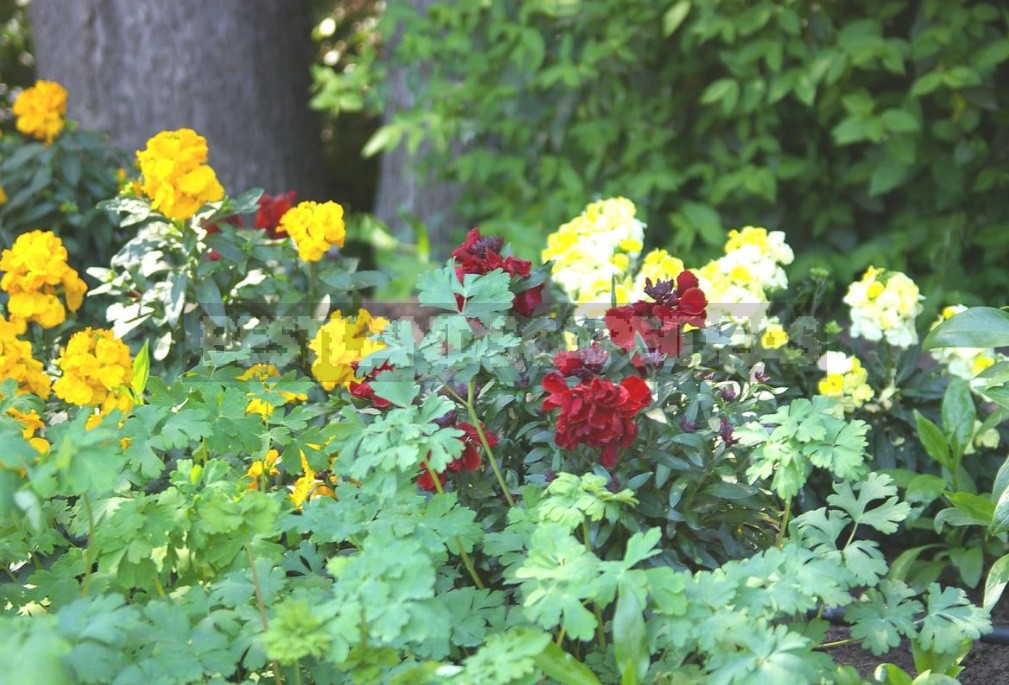
But she was not destined to sink into oblivion: last April I saw her again. The mixture of varieties and colors looked really great!
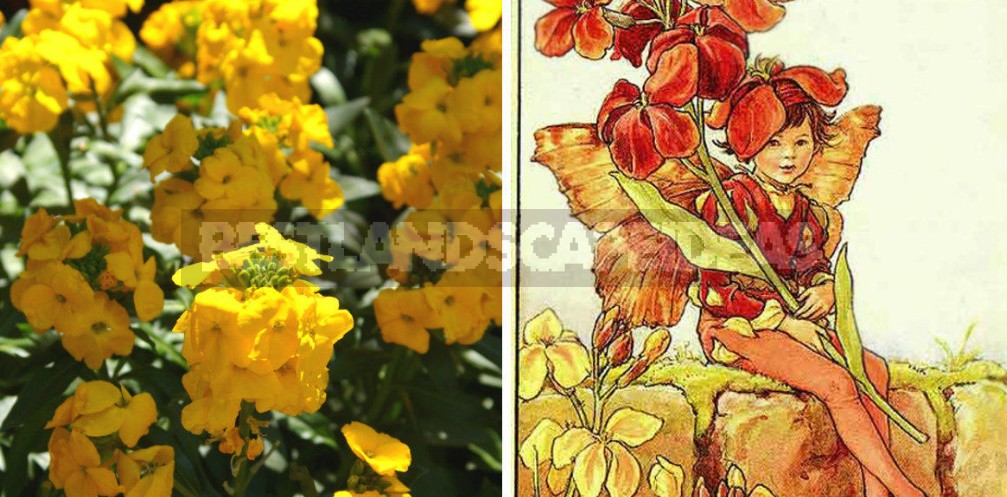
Polianthes tuberosa
Polianthes tuberosa is a perennial corm plant from the Agavaceae family that can reach a height of 1.2 m and a width of up to 15 cm.. Fragrant and tender, once very popular and quite widespread. Until now, it is Polianthes tuberosa that is considered the Queen of fragrances, and Vespers-night.

Polianthes tuberosa is native to Mexico. Now it is sometimes grown for cutting greens. Arrow-shaped flower stalks appear only if the lateral offspring are removed as they form. The leaves are linear, up to 45 cm long, collected at the base in a rosette. Flowers with a very strong peculiar aroma, white, 3-6 cm long, collected in spike-like inflorescences; bloom in summer.
There are varieties, including Terry, the most spectacular – ‘the Pearl’.

Requirements for growing conditions
Polianthes tuberosa is a very thermophilic plant, it has a critical winter minimum of +15°C, that is, it does not winter in the open ground. In February-March, corms are planted in pots (shallow, so that from the top to the surface of the soil substrate was 1 cm). Before planting, it would be good to carry out prevention by immersing the corms of Polianthes tuberosa for 30 minutes in a pink solution of potassium permanganate with the addition of some growth stimulant. In open ground planted:
- in the middle lane-closer to June;
- in the South-earlier, in may, but only when the threat of returning spring frosts passes and the temperature is set steadily above +15°C.
You can grow them in pots: take them out in the spring in the garden and dig them into the ground. Or not to dig, but then, in order to avoid overheating of the root system, you need to put the pot with the plant in a slightly larger pot.
Polianthes tuberosa normally develops and blooms in the open ground only when planted in Sunny places with fertile, light, very loose soil. Faded copies are removed and replaced with young ones.
Propagated by side rosettes, which grow to a fairly large state. Not damaged by naked slugs.
Accommodation in the country
A spectacular fragrant plant can and should be placed as close to the recreation area as possible.

Elegant slender Polianthes tuberosa looks very elegant in flower beds.
In addition to these 3 types and their varieties, today we are happy to notice and welcome back to our cottages:
- Reseda odorata
- Viola williamsii
- fragrant varieties of Lobularia maritima, or Alyssum maritimum
- Matthiola longipetala, Matthiola bicornis;
- fragrant varieties of Antirrhinum, or Antirrhinum majus
Scented plants are the dream of any summer resident, but do not invite them to your garden if your family has allergies.
